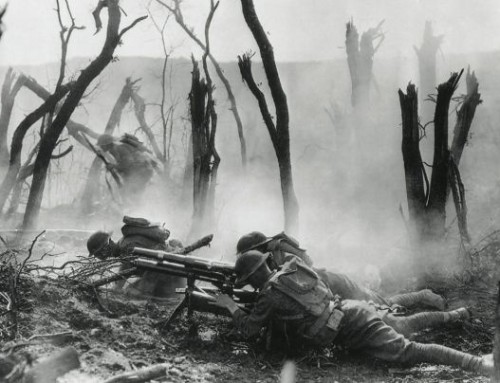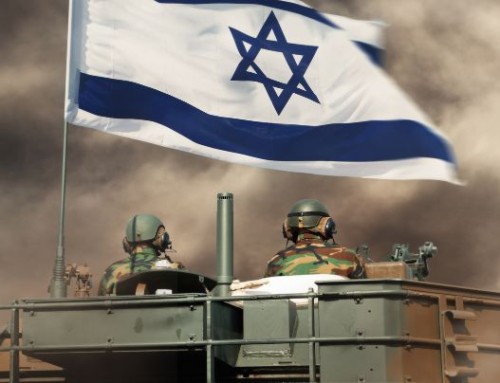Last Friday, in the U.S. Naval Academy’s Memorial Hall dedicated to Navy and Marine heroes, Thomas B. Modly took the oath of office as the 33rd Under Secretary of the Navy and Marine Corps. In his remarks, Mr. Modly eloquently combined naval lore with a cogent understanding of the challenges lying ahead and a plan to deal with them. Using the Academy motto of “From Knowledge Seapower” as his theme, Mr. Modly warned of the dangers of a “hollow force” and the singular importance of people drawing on the father of the American Navy John Paul Jones’ dictum that “men are important than guns in the rating of ship.”
He further took Captain James Lawrence’s dying order on the decks of USS Chesapeake of “Don’t Give Up the Ship” in the War of 1812 as a commitment that he and Navy Secretary Richard Spencer would honor in strengthening naval forces. And he made the administration’s goal of procuring a Navy of 355 ships a top priority. Currently, the Navy and Marine Corps numbers about 275 men of war.
Numbers have defined naval needs since the Reagan administration set a “600 ship” Navy as its objective. Under the forceful leadership of then Secretary John Lehman, the goal was largely achieved. Now, three decades later, the Navy is struggling to keep a fleet of less than half that size ready for action.
While numbers are arbitrary, three separate studies analyzed the current requirements and demands on the fleet. 355 was the level recommended to fill theses commitments. But there are only two ways for this buildup to take place.
First, is the old fashion way. Spend more money. However, given the growing debt and deficits and the strangling impact of the Budget Control Act, barring a crisis, that spending increase will not happen. Hence, innovation, imagination and, as the new Under Secretary persuasively argues, knowledge and creativity must break the mold if 355 is to be remotely achievable.
Since the end of World War II, this dramartic transformation of the naval services occurred only once. When Admiral Elmo R. (Bud) Zumwalt became Chief of Naval Operations in 1970, he initiated Project 60 that revolutionized the navy. Taking 75 rather than the intended 60 days, Zumwalt literally cut the 1000 ship largely World War II Navy in half using the savings to recapitalize and modernize the naval services.
Today, a similarly dramatic plan is needed to break the mold and rebuild the Navy. First, to increase ship numbers, the unthinkable option of buying foreign made hulls that would be cheaper and quicker to procure and outfitting each with American weapons systems should be considered. Of course, this violates the Jones Act, long outdated, and Buy America legislation. However, if 355 ships is to be achieved, Congress must be presented with this option.
Second, smaller combatants, say 150-200 feet in length and about 1000 tons in displacement, more heavily armed than the current Littoral Combat Ship (LCS) and designed to operate in the Mediterranean, Baltic, Persian Gulf and other coastal zones should be procured. These ships would carry large numbers of air, surface and subsurface unmanned vehicles along with a squad or two of Marines. And these ships should operate in teams of at least three to maximize lethality.
At a cost of about $50 million each, 80 could be procured for the price, ironically, of one Zumwalt class warship which is about $4 billion. That would quickly get to 355. Further, to recapitalize, placing large combatants in a reserve or cadre status for extended periods that would allow rapid regeneration if needed, saves considerable amounts of money for operations and maintenance that could be used elsewhere.
Specifying that half the submarine force be diesel electric is also viable as these boats are quieter than nuclear powered ships and less expensive to build and man. This applies to ballistic missile submarines whose long range weapons could be fired from home waters. Clearly, opposition would be fierce to breaking this mold.
Since the Russians are increasing its submarine force, reconstituting perhaps the most effect anti-submarine weapon of World War II—-the blimp or airship also should be examined. No merchant ship escorted by a blimp was lost to a U-boat in that war. And there is no reason that these could not be considered ships as well in the 21st century.
Finally the “1000 ship Navy” designated by President George W. Bush should be re-engaged. This meant relying on allied and friendly navies to fill certain operational needs to complement or offset U.S. Navy demands. A precursor during the Tanker War of the mid-1980’s was when commercial ships were reflagged under the US ensign to protect them.
For example, in European, waters where a U.S. four star admiral commands both NATO and US forces, warships from the UK, France, Italy, Germany and other allies with US liaison teams aboard could assume greater responsibilities.
To get this done Task Force 355 should be created now directly headed by either the Secretary of the Navy, Chief of Naval Operations and Commandant of the Marine Corps or by the Under Secretary and the service vice chiefs. The aim of Task Force 355 is to build towards a 355 ship Navy. And to do so, certain old molds will have to be broken. Otherwise, the Navy will struggle to maintain its current 275 ships.
______________________________ ______________________________ ___
Dr. Harlan Ullman is UPI’s Arnaud de Borchgrave Distinguished columnist; Distinguished Senior Fellow and Visiting Professor at the U.S. Naval War College; and whose current book is Anatomy of Failure—-Why America Loses Every War It Starts. He is reachable at @harlankullman on Twitter.






Comenteaza